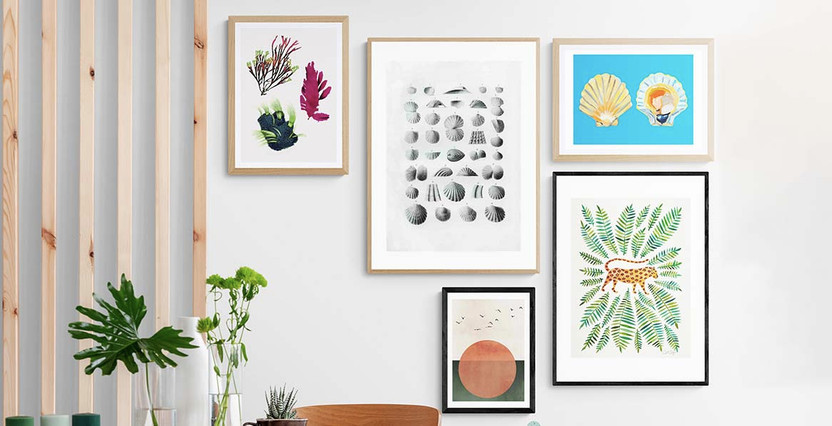Are our brains wired to love art and nature?
Posted by East End Prints on 17th Nov 2021
Mind-wandering is something that we all do as humans. It’s been found to be an incredibly pleasurable experience that we all probably need more of. In fact, some of the triggers for mind-wandering - especially those in art and nature - have been found to help reduce anxiety and stress and make us feel better. So, does that mean our brains are wired to love art and nature?
The therapeutic nature of daydreaming
When we are in a mind-wandering or daydreaming state of mind we are often at our most creative. This relaxed state tends to be more improvisational than our normal consciousness and it’s when we feel like this that we are more likely to have spontaneous thoughts and experience waves of creative images. This is a state of mind that most of us enjoy. It increases cognitive fluctuations in the brain and has a very therapeutic impact.
The power of nature
There are some situations that can amplify the fluctuations in the brain that cause us to have this therapeutic experience. For example, it can happen when we are walking outdoors in nature. Scientists have established that the reason for this is because certain patterns in nature called ‘fractals’ can put us onto the pleasurable path of mind-wandering. A fractal is a repeating pattern that can be coarse-grained or fine-grained - you can see it in nature, for example, in the forking patterns of a tree, which repeat all over it, from the veins in the leaves to the way that the twigs stick out from the branches. Our own unconscious eye movements also have a fractal pattern when they move over images. The impact of looking at fractal patterns in nature with fractal eye movements can be soothing, reducing stress and triggering more pleasurable mind-wandering.
Fractals and artwork
The other place where fractals are frequently found is in artwork. When we see these patterns and proportions in artwork it has the same impact as when we look at them in nature. Studies have established that humans prefer to view artworks that contain fractal patterns than those that don’t - and that we will usually find artwork that contains these more aesthetically pleasing than a piece that doesn't. When we’re looking at fractal patterns we interpret them as an opportunity to enter into territory that we may not otherwise explore on a conscious level. Our bodies, eyes and brains get the chance to make new associations on an unconscious and involuntary level and can play, wander and daydream in a way that we may not do at other times. Whether it’s fractals in art or nature we often find the experience is enjoyable even though we don’t consciously know why.
Our brains are wired to enjoy a process of play, imagination, improvisation and trial and error, particularly because these are often experiences that our day-to-day life doesn’t make much space for. The fractals that are found in art and nature can trigger a therapeutic, mind-wandering state, which is why we tend to enjoy them so much.

